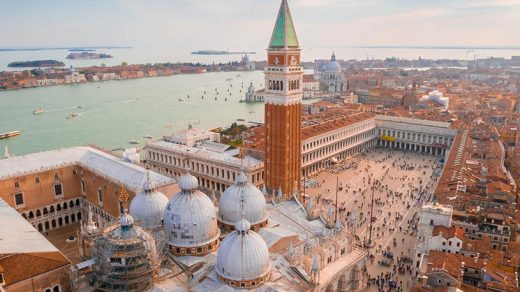In January, Maastricht exudes a unique charm, with soft winter sunlight filtering through the frosty streets, casting a serene atmosphere over this ancient city. As one of the oldest cities in the Netherlands, Maastricht is a hidden gem in the southern part of the country, where history and modern culture beautifully intersect. I was lucky enough to explore the many facets of this city, which offers everything from medieval architecture to vibrant modern life.
Maastricht Old Town: A Journey Through Time
The Old Town of Maastricht is the heart of the city, brimming with historical buildings and ancient streets. As I walked along the cobbled alleys and admired the ancient town squares, I felt as if I was stepping back in time. The architecture here is diverse, from medieval castles to Renaissance buildings and 19th-century commercial shops, each one telling a story of Maastricht’s rich past.
One of my favorite spots was the Market Square (Markt Square), the center of the Old Town. Surrounded by ancient buildings, the square has a lively atmosphere, especially in the mornings when locals and tourists alike gather at the outdoor cafés. Sipping a warm cup of coffee while watching the world go by was a simple yet heartwarming experience. Whether in the morning or afternoon, the square is full of life.
Basilica of Saint Servatius: A Symbol of Religious and Cultural Heritage
From the Old Town, I made my way to one of Maastricht’s landmarks – the Basilica of Saint Servatius. This stunning church blends Romanesque and Gothic styles, and it is one of the oldest churches in the Netherlands. As I entered the church, I was immediately struck by its grandeur: the massive dome and the intricate stained-glass windows created a sacred and peaceful ambiance.
The Basilica is not only a religious site but also a cultural icon of Maastricht. It is one of the most important religious landmarks in the Netherlands and offers visitors a glimpse into the region’s deep historical and spiritual roots. Standing in front of the church, I could almost hear the prayers of the devout from centuries past, as if the building itself held the weight of history.
The Meuse River: Experience the Tranquility of Dutch Nature
After visiting the church, I headed to the Meuse River (Meuse), which flows through Maastricht. The river has long been the lifeblood of the city, and it provides a perfect way to enjoy the serene beauty of the area. I opted for a boat tour along the river, which, despite the chilly January weather, was a peaceful and beautiful experience.
Sailing along the Meuse, I enjoyed the stunning views of the riverbanks. The landscape was dotted with lush greenery, old bridges, and charming little towns. The boat crew shared interesting stories about the river’s history and its significance to the development of Maastricht. After the boat ride, we docked at a café by the river, where I indulged in a hot chocolate, soaking in the tranquil ambiance of the area.
Other Must-Visit Attractions
Beyond the Old Town, the Basilica of Saint Servatius, and the Meuse River, Maastricht offers plenty of other fascinating sites to explore. Here are a few places I highly recommend:
The Caves of Saint Pietersberg: An Underground Adventure
The Caves of Saint Pietersberg are a hidden treasure beneath the rolling hills of Maastricht, offering an exciting and educational adventure for visitors. These expansive caves, located just outside the city, stretch for miles and have served multiple purposes throughout history. Originally carved by hand to extract limestone, they became an integral part of Maastricht’s defense system during the Middle Ages. Over the centuries, they were also used as shelters, storage spaces, and even hiding places during wartime.
As I ventured into the caves with a knowledgeable guide, I was immediately struck by the eerie atmosphere and cool, damp air. The tunnels were narrow and winding, and with every step, I felt as though I was walking through centuries of history. My guide shared fascinating stories about how the caves had been used throughout the ages, from their origins in the Roman era to their role as hiding places during World War II. It was thrilling to think that I was standing where so many important historical events had occurred.
Some of the caves are decorated with old frescoes and carvings, adding to the mystique of the experience. The guide also pointed out where early limestone extraction took place and how the caves were expanded over time to create an intricate underground network. The more I explored, the more I appreciated the importance of these caves in Maastricht’s history.
The Caves of Saint Pietersberg are also home to a variety of wildlife, including bats that hibernate in the cooler months. The tour was not only an opportunity to learn about history but also an intriguing dive into the natural world. I’d recommend wearing sturdy shoes and bringing a jacket since the temperature in the caves can be quite chilly, even in winter.

Tips for Visiting the Caves:
- Guided Tours: To fully appreciate the history and significance of the caves, it’s best to take a guided tour. The guides are incredibly knowledgeable and make the experience much more engaging.
- Dress Appropriately: The temperature inside the caves can be significantly cooler than outside, so bring a jacket or sweater. Wear comfortable shoes, as the paths can be slippery.
- Time to Visit: Plan for about an hour to an hour and a half for the tour, depending on the route and the guide’s pace.
Maastricht Art Museum: A Cultural Journey Through Time
For anyone interested in art and culture, the Maastricht Art Museum (Stichting Bonnefanten) is an absolute must-visit. Located on the banks of the Meuse River, the museum offers a comprehensive collection of artwork that spans centuries, from the medieval period all the way to contemporary art. The museum’s collection is especially renowned for its focus on Dutch artists from the 19th and 20th centuries, providing an in-depth look at the evolution of Dutch art.
As I walked through the museum’s galleries, I was struck by the vast range of art styles on display, from religious and classical paintings to modern and abstract works. The collection includes pieces by well-known Dutch artists, including works from the likes of Jan van Goyen and other masters of Dutch realism, as well as contemporary installations that challenge traditional ideas of art.
One of the highlights of the museum is its unique architecture. The building itself is a piece of art, designed with clean lines and minimalist aesthetics that complement the museum’s collection. The combination of classic and modern architecture provides a fresh take on art spaces, allowing visitors to feel as though they’re experiencing the art in a dynamic, ever-evolving environment.
I spent several hours at the museum, immersing myself in the artistry, culture, and history of the Netherlands. There’s something for everyone, whether you’re a connoisseur of classical paintings or a fan of contemporary art. For those who are particularly passionate about Dutch art, the museum also offers rotating exhibits and temporary shows, making every visit feel unique.
Tips for Visiting the Maastricht Art Museum:
- Opening Hours: Be sure to check the museum’s opening hours before your visit. The museum is typically closed on Mondays, but it is open the rest of the week.
- Plan Time to Explore: The museum’s collection is large, so allow for at least 1.5 to 2 hours to explore the galleries.
- Audio Guide: For a more detailed understanding of the pieces on display, consider renting an audio guide or taking part in a guided tour, available at specific times.
Jeker Valley Park: A Peaceful Nature Escape

If you’re looking for a tranquil escape from the city, Jeker Valley Park is the perfect destination. This lovely park, located just a short distance from the city center, is an ideal spot to take a relaxing walk, especially during the winter months. The park is well-known for its lush greenery, scenic walking trails, and the quiet atmosphere that makes it feel like a peaceful oasis in the middle of Maastricht.
During my visit, I wandered along the meandering paths, surrounded by trees that were dusted with frost, and small streams that added to the park’s natural beauty. The serenity of the park made it a perfect place to reflect and enjoy the beauty of winter in the Netherlands. Whether it’s early morning or late afternoon, the park’s atmosphere remains calm, with only the sounds of nature accompanying your stroll.
In the winter, the park takes on a special charm, with frost covering the leaves and creating an almost magical ambiance. If you enjoy taking photos, Jeker Valley Park offers plenty of picturesque spots, from the rustic bridges to the winding river that flows through the park.
There are also plenty of benches along the trails, so you can stop and take in the view or enjoy a peaceful moment. The park is quite popular among locals who come for a jog, walk their dogs, or simply relax. Whether you’re a nature lover, photographer, or someone who just wants to escape the hustle and bustle of the city, Jeker Valley Park offers a serene retreat.
Tips for Visiting Jeker Valley Park:
Photography: Bring your camera or smartphone, as the park offers many opportunities for nature photography, particularly during the winter months when the frost creates unique photo opportunities.
Best Time to Visit: The park is beautiful year-round, but if you’re visiting in winter, dress warmly and wear sturdy shoes, as the ground can be slippery in places.
Bring a Picnic: If you want to enjoy a relaxing afternoon, bring a picnic along. There are plenty of scenic spots to sit and enjoy your meal.
Winter Travel Tips
- Weather: The weather in Maastricht during January is cold, with temperatures usually ranging from 0°C to 6°C. Make sure to bring warm clothing, especially a winter coat, scarf, and gloves.
- **Transportation:** Maastricht’s public transport system is very convenient, especially the train. Traveling between cities by train is an excellent option, as the train system is efficient and well-connected. For those who want to explore the city, walking is the best option. Most attractions are within walking distance, and the city’s compact size makes it easy to get around.
- Accommodation: January is considered off-season in Maastricht, so it’s a great time to enjoy fewer crowds and better rates. Booking hotels in advance, especially those in the city center, is highly recommended for the best options.
- Dining: Winter in the Netherlands is the perfect time to indulge in hearty Dutch comfort food. Try traditional dishes like stews and pancakes, which are perfect for warming up after a chilly day. Maastricht’s Old Town has many cozy restaurants offering warm and inviting Dutch cuisine.
Maastricht is more than just a city rich in history; it is a place where modernity and ancient culture meet in a unique and captivating way. During my visit in January, the city’s charm was enhanced by the quiet beauty of winter. Whether you’re exploring ancient streets, taking a boat ride along the Meuse, or visiting its many museums and parks, Maastricht offers a diverse range of experiences. If you’re looking for a destination where history, nature, and culture come together in perfect harmony, Maastricht is an excellent choice.






